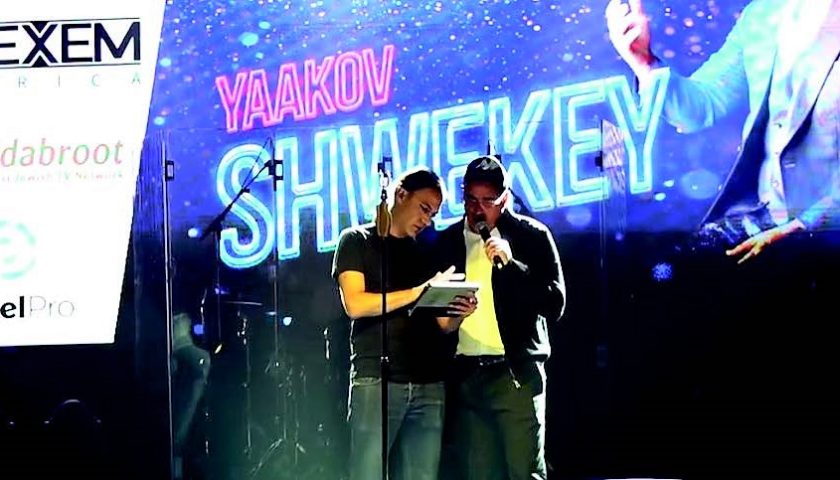By Aron Ziegler
Aron Ziegler has learned for over 15 years at the Yeshivah Gedolah of Johannesburg, including five years full-time. He was among the first students of Hirsch Lyons School. For the past 10 years he has been the spiritual leader of the Kensington Hebrew Congregation. He also leads a learning group weekday mornings at Cyrildene Shul. He strives, in the words of his beloved Rosh Yeshivah’s rebbe, to be a ‘Torah Jew’.
Yisro was an advisor to Pharaoh, but had to flee Egypt after voicing his objections to Pharaoh’s plans to destroy the Jewish people.[1] When Moshe later fled from his home country, Egypt, he settled by a well in the land of Midian. There he met the daughters of Yisro who had come with their father’s sheep to the well. Moshe married Tzipporah, one of Yisro’s daughters. After the episode at the burning bush, when Hashem sent Moshe back to Egypt to begin the redemption process, Moshe returned alone to Egypt while his wife and their two sons, Gershom and Eliezer, remained in the relatively safe territory of Midian with Yisro. Only after the redemption and exodus of the Bnei Yisrael from Egypt did Yisro take Tzipporah, Gershom, and Eliezer and travel to reunite them with Moshe and the rest of the Bnei Yisrael in the desert. The Torah tells us[2], “And Yisro – the priest of Midian – the father-in-law of Moshe, heard all that Elokim had done for Moshe and Yisrael His nation, that He (Hashem) had taken Yisrael out from Egypt.” Our sages tell us[3] that Yisro came to meet up with Moshe and the Bnei Yisrael because he himself wanted to convert and join them.
This was a very courageous and bold move on the part of Yisro. Yisro, we’re told[4], had investigated all the religions of the world and was a renowned authority – to such an extent that he had claimed the title[5] of “Priest of Midian”. For him to renounce his life’s achievement and the public office that he held and join the fledgling – merely a couple of month’s old – Jewish nation was an act of tremendous humility, integrity, and honesty. It would have been like the Dalai Lama, the Catholic Pope, or the Ayatolah of modern times converting to Torah Judaism.
For Moshe to accept his father-in-law as a convert on the heels of the exodus, however, wasn’t so simple and could have even been a problem. The Rambam writes[6] ”…in the days of David HaMelech (King David) and Shlomo HaMelech (King Solomon) – the Beis Din (Jewish Court) did not accept any converts, because during the reign of David HaMelech (the Beis Din was greatly concerned that the motivation of the conversion applicants was) perhaps motivated by fear, and during the reign of Shlomo HaMelech, (they were greatly concerned that the motivation of the conversion applicants was) perhaps because of the (great status that)…the Bnei Yisrael enjoyed at that time. Because anyone who converts from the nations (to Judaism) due to any temporal worldly factors is not from the righteous converts.”
At the time of the exodus, the Bnei Yisrael enjoyed, arguably, the greatest bliss ever experienced by a people on planet Earth. They were experiencing levels of prophecy unparalleled even by some of the most famous prophets.[7] They were experiencing completely open and profound miracles: walking through a split sea; having their enemies, the Egyptian forces – the most advanced and powerful army of the time, annihilated before them without them having to lift a finger; Manna falling daily from heaven; clouds of glory laundering their clothes[8], and more! Who in his right mind wouldn’t want to join and come along for the ride? Even a prominent and educated person like Yisro could be lured by these extraordinary open public miracles, or even motivated out of fear[9], to join up with the Jews. So surely the consideration of ‘the sincere motivation of the convert’ as the Rambam codifies for us needs to be investigated in the case of Moshe accepting his father-in-law into the Jewish nation during such an auspicious time in our history.
Rabbi Avraham Yitzchak Sorotzkin suggests[10] that this is why the opening verse of this account of Yisro’s joining the Jewish people specifically notes that, “Yisro heard all that 1) Elokim had done for Moshe and Yisrael His nation, and that 2) He (‘Hashem’) had taken Yisrael out from Egypt.” In other words, Yisro had heard two things: the great redemption that Hashem (the name of Hashem connoting mercy) had performed in taking the Jews out of Egypt and he also heard “all that ‘Elokim’ (the name of Hashem connoting strict judgment) had done to Moshe and Yisrael His nation”. Yisro did not only hear the wonderful and rosy side of the experiences of being Jewish – of prophecy and open miracles – but he also heard the very difficult and torturous experiences that Elokim had brought upon us before our redemption, while suffering for many, many years as slaves in Egypt.
Perhaps what Rabbi Sorotzkin’s point can also be referring to is the statement of our Sages[11] who ask on the verse, “And Yisro the Priest of Midian heard”, what specifically Yisro heard that moved him to come and convert. And they answer: he heard about the event of the splitting of the sea, and he heard about the episode of the battle with Amalek. In other words, he heard how Amalek had viciously attacked the Bnei Yisrael just after our miraculous exodus from Egypt. So, Yisro was well aware of the great challenge that the Jewish people faced now that we were openly revealed to be the chosen people, namely that of the evil of Amalek, who had shown themselves to be our ever-present arch enemy, willing to do whatever was necessary to harm us, including sacrificing their own lives. And this, despite the fact that they had little hope of ever defeating us considering we had just defeated the world’s greatest army without so much as lifting a finger.
With this in mind, we can now understand that Yisro was well informed of the great inconvenience of being part of the Bnei Yisrael, of being an eternal target of Amalek and others – that the road of the Chosen People is not always so smooth and easy – and yet he nevertheless still wanted to sign up. Accordingly, Moshe could recognise his father-in-law’s desire to join the Jewish nation as being something motivated by sincerity and genuineness.
It’s worth noting that the Talmud also tells us[12] that in the days of Moshiach, a time when the Jewish people will have a very distinguished and prestigious standing, new converts will no longer be accepted, as it would be like allowing a person to place a bet after everyone already knew who had won. Only before a contest has finished can bets be placed, but no one in his right mind would take a bet from someone after a match had finished. So too, one cannot join and become a member of the Chosen People once it has become obvious that we are the Chosen People. Only when and while it is not so obvious is it a real choice and decision with the requisite high stakes involved, demonstrating the loyalty and genuine commitment to support and join one’s lot with that of the Jewish people. This is the story of Yisro, the first covert, and is the story of every righteous convert that comes after him.
Some famous converts throughout history:
Ruth
Ruth was a Moabite princess who famously converted, later marrying Boaz. She was the great-grandmother of David HaMelech and great-great-grandmother of Shlomo HaMelech. The Moshiach himself will eventually come from this line.
Onkelos
Onkelos was from the Roman Emperor’s family and risked his life to convert. His authoritative translation of the Chumash into Aramaic is traditionally printed alongside the Hebrew text.
Shmaya and Avtalyon
In the time of the Mishna, Shmaya and Avtalyon, known for being leaders of their generation, as well as the teachers of Hillel, were converts.
Rav Shmuel bar Sheilas
According to the Talmud[13] some of the descendants of the wicked Haman, who famously tried to kill the entire Jewish people thus leading to the holiday of Purim, taught Torah in Bnei Brak. Some texts identify one of the descendants as referring specifically to Rav Shmuel bar Sheilas.
Avraham ben Avraham
In the 18th Century, Count Valentine Potocki, who was reportedly a Polish nobleman, converted to Judaism, becoming known as Avraham ben Avraham, and was subsequently executed by the Catholic Church. His ashes were buried next to the grave of the Vilna Gaon.
- Sotah 11a ↑
- Shemos 18 ↑
- Zevachim 116a ↑
- Tanchuma Yisro 7 ↑
- See Rashi Shemos 2:16 ↑
- Hilchos Issurei Bi’ah 13,15 ↑
- See Rashi Exodus 15:2 from Mechilta ↑
- Rashi Devarim 8:4 ↑
- See e.g. Shemos 15:15 Rashi ‘Namogu’, Yehoshua 2:9-11 ↑
- See Rinas Yitzchak ↑
- Rashi Shemos 18:1 from Zevachim 116a ↑
- Yevamos 24b ↑
- Gittin 57b, Sanhedrin 96b ↑




